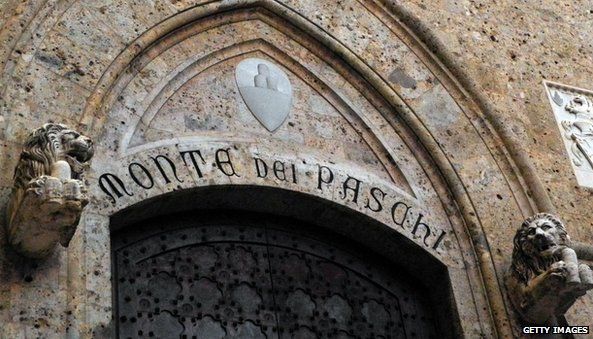Viewpoint: The end of High Street banking as we know it
- Published

In 1961, Monash University in Melbourne, Australia bought its first computer - the Ferranti.
It had 1K of memory, cost $360,000 (£220,000) and was the size of a whole room.
A typical mid-range laptop computer today has 250,000 times the memory, is 4-8 million times faster and costs 1/500th of what the Ferranti cost as a computing platform.
This process, the acceleration of technological capability, is known as Moore's law - and it has meant that since the late 1800s, the rates of technology adoption and diffusion into society have kept getting faster.
Rapid adoption
While the telephone took approximately 50 years to reach critical mass, television took just half that (about 23-25 years).
Mobile phones and PCs took about 12-14 years (half again), and then the internet took just seven years (half again).
New technologies and initiatives such as the iPod and Facebook are now being adopted by consumers en masse in timescales that are now measured in months, not years.
Apple sold more mobile devices in 2011 alone than all the Mac computers it had ever sold in the 28 years prior.
This was the same year that saw the internet surpass television and newspapers as the primary news source for much of the developed world.
Also in this year, the average time spent daily using mobile phone apps surpassed the time people spent surfing the web on their PC.
All of this technological change has given rise to a new kind of customer. The kind of customers for whom the stuff that bankers consider "new" is in fact just life. It's normal.
Many businesses are now muscling in on territory traditionally held by the banks. Many mobile carriers are providing pre-paid mobile wallets systems - as are stores like Starbucks.
Already 30% of Americans are using pre-paid cards - products that don't need the issuer to have a banking licence.
It means that a new audience of digitally connected people are beginning to decouple in their minds, their day-to-day relationship with their High Street bank.
Banks of old
The oldest surviving bank in the world today is the Monte dei Paschi di Siena, founded in 1472. Its original branch still stands in Siena.
If you were to visit that branch back when it opened the experience would have been very familiar to that of most modern retail banking customers.
A cashier sits behind a small window, a desk to sit and talk to the "banker", a big safe where all the deposits are stored.
This kind of customer experience is a total anathema to the customers of tomorrow.
In Britain, only 30% of people regularly use a branch, and half of this group are small businesses that are still reliant on cash.
With new mobile payments services such as Square (in the US) and the Swedish firm iZettle coming thick and fast, how long will this status quo last?
Even if current trends don't accelerate at all, by 2016 by far the most common interaction that most people will have with their bank will be through their smartphone.
Banking through our desktop computers, or telephones, will still play a major role.
But, in the era of big data and exponential technological progress, can there really still be a role for the 1472 model of banking?
Banks insist that face-to-face advice is still the reason people visit branches.
But the truth is that, with current account margins so razor thin, there is little or no incentive for banks to spend money giving people advice that keeps them out of debt.
Already major payments providers like Visa are pushing Near Field Communications (NFC) payment solutions hard - a raft of contactless payment systems is beginning to hit the market.
Customer choice
The tipping point for these types of payments is fast approaching.
I believe this new kind of technology will pave the way for a new kind of financial advice.
Instead of visiting a branch once every year, spending advice can be pushed through to the payment device itself.
Rather than a "once-a-year financial health check-up", it's far more powerful to tell a customer, as they're about to buy something, what percentage of their monthly income is represented by what they are about to spend their money on.
More importantly, this is the kind of advice that the customers can choose for themselves.
The banks that prosper will be those that have become very, very good at being virtual and digital repositories of their clients' money, allowing access to that money anywhere at any time.
Most of all, however, the successful banks will be those that become great service organisations.
Despite all of the dazzling technological possibilities, there is no silver bullet, no single new technology that will change the face of banking. That will be driven by people.
The banks that succeed in the future will be those that are willing to listen and respond to their customers in a way that no major bank is doing at the moment. In my opinion, that's no bad thing.
Brett King is the author of Bank 3.0, a book looking at the latest trends in technology and how it affects the way we look after our money. He is also the founder of Movenbank, a banking start-up.